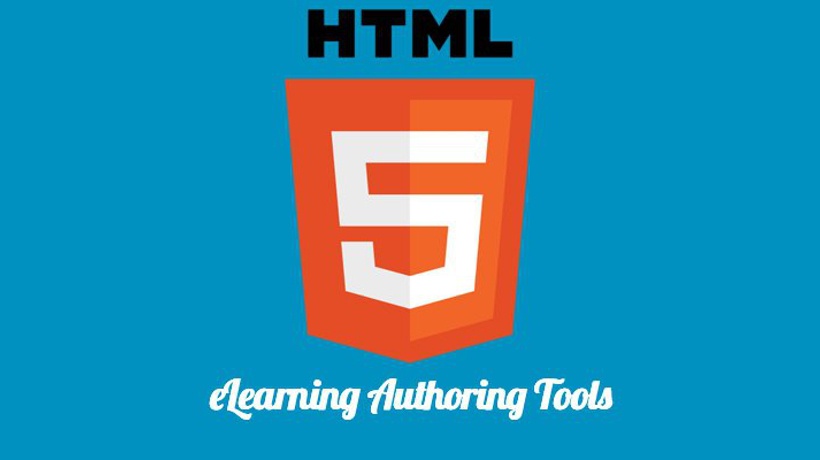Choosing Your Next eLearning Authoring Tool: 8 Top Features To Consider
Aside from your budget and training objectives, features are the most critical factor to consider when investing in an eLearning authoring tool. You need software that can offer all the key functions you need to create meaningful online training content. But how do you know which software is suitable for your current and future eLearning projects? Here are 8 top features to compare when selecting your next eLearning authoring tool.
1. User Interface
All the must-have features aren’t worth the investment if you cannot utilize the eLearning authoring tool effectively. As such, the UI is a crucial factor to consider when comparing your options. Ideally, the platform should offer the perfect balance of creative control and ease of use. It all comes down to the talents of your eLearning team and their familiarity with eLearning authoring tools, in general. For example, more experienced eLearning pros may opt for a more robust tool with advanced features, even if it’s not necessarily intuitive. Likewise, less experienced teams might require a more basic tool that includes drag and drop interactions that are simple and straightforward.
2. Support Services
How much support do you really require from the vendor? Which support services are included in their basic package? Can you purchase add-ons such as 24/7 phone assistance or instant messaging with a trained tech? While some eLearning authoring tools only offer an online FAQ, others may go the extra mile by providing one-on-one support. Once again, the experience level of your eLearning team plays an important role in the amount of assistance you’ll need.
3. Online Asset Library
Most eLearning authoring tools feature a built-in online asset library, complete with images, cutout characters, and even videos. Take a tour of their online repository during your free trial, or look for online reviews that rate the multimedia resources included in the package. You should also have your objectives and outcomes on-hand to ensure that the online assets they offer, align with your needs. For example, does it allow you to create interactive scenarios or simulations that facilitate real-world experience for skill-based training?
4. Language Support
Many eLearning authoring tools now support multiple languages. Which means that you can develop online training materials for a global audience. Furthermore, your geographically dispersed eLearning content developers can use the tool to produce high quality online training resources thanks to the fact that the interface is in their native language. Ask the eLearning authoring tool vendor about the specific languages they support and whether it’s included in their standard package. For example, do you have to pay for language add-ons to globalize your eLearning course?
5. Mobile-Friendly
Modern online learners expect to be able to access online training materials on-the-go. This is why your eLearning authoring tool needs to produce mobile-friendly eLearning content. Ideally, responsive resources that automatically adjust to fit their screen size. This ensures that everyone gets the same eLearning experience, regardless of their mobile device preferences. The eLearning authoring tool should also give you the ability to preview the layout for each breakpoint and make minor adjustments. For example, resize the buttons to accommodate smaller screens or remove extraneous images to speed up loading times.
6. Installation Options
Some eLearning authoring tools are cloud-based, which allows you to access the platform from anywhere in the world, while others must be locally installed on your hard drive. This is one of the most important factors to consider when choosing your new eLearning authoring tool, as all relevant team members should have the opportunity to access the software whenever the need arises. For example, a collaborator thousands of miles away can quickly login to the cloud-based eLearning authoring platform to complete their respective assignment, such as adding graphic design elements. However, an installed option may be best or local teams who require more creative control or are concerned with data security. You don’t have to worry about collaborators leaving the browser open on a public computer where strangers can access sensitive data.
7. Themes And eLearning Templates
If you don’t want to start from scratch, you need to look for an eLearning authoring tool with a sizable eLearning template library. eLearning templates can help you create effective eLearning content in a fraction of the time. The same goes for themes. Top-notch eLearning authoring tools include a variety of built-in themes in different niches. For example, a handful of themes that are custom-tailored to compliance online training activities. As such, you can reuse a single eLearning template for multiple eLearning projects instead of having to design everything from scratch for every eLearning course.
8. Pricing Flexibility
Ultimately, pricing dictates whether you’ll purchase an eLearning authoring tool or pass. You may fall in love with the features, but the software is simply out of your budget. Many eLearning authoring tools now offer subscription-based pricing plans. Thus, you only have to pay for the number of users who access the system or the amount of eLearning content you produce any given month. It’s also wise to ask about the vendor's pricing model. While some may offer one-off licensing fees, others require an annual contract. When in doubt, schedule a meeting with your eLearning team to get their feedback. They may be able to offer valuable advice regarding tools they’ve used in the past and whether they are worth the investment.
Create a list of the eLearning authoring tools you’re considering, and see how they stack when in regards to these essential features. This can help you avoid trial-and-error. Not to mention, the time and trouble of having to work with an eLearning authoring tool that doesn’t live up to expectations. If you’re still unsure about which eLearning authoring tool to choose, request a free trial or demo from the vendor. That way you explore the features and functionality firsthand.









